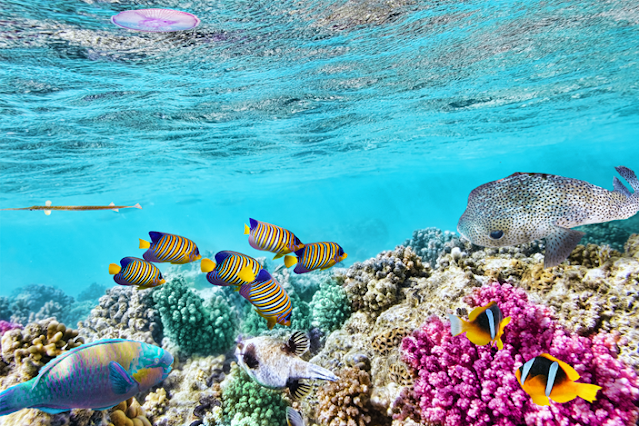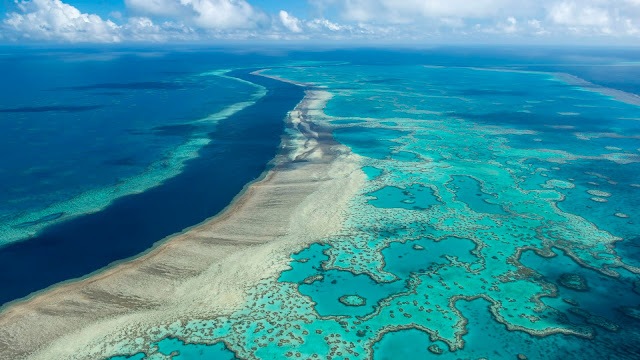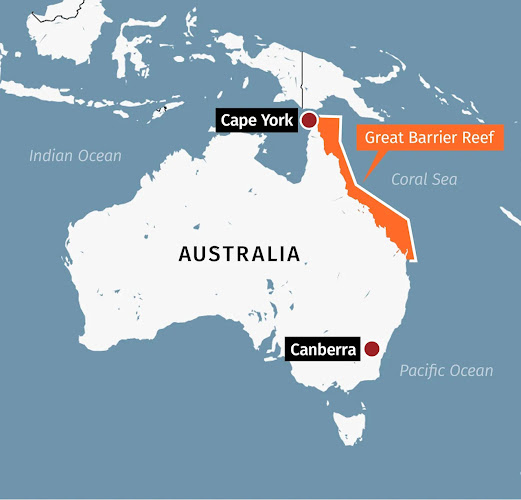Best Travel Places In World Great Barrier Reef Australia: A Natural Wonder Worth Preserving

Introduction
The GREAT BARRIER REEF is one of the world’s most remarkable natural wonders. It is a vast coral ecosystem located off the northeast coast of Australia, stretching over 2,300 kilometers (1,400 mi) along the Queensland coast. It is the largest coral reef system on Earth and visible from space.
The Great Barrier Reef Best Travel Places In World is composed of more than 2,900 individual reefs and about 900 islands, covering an area of approximately 344,400 square kilometers (133,000 sq mi). It is home to a rich biodiversity of marine life including thousands of species of fish, corals, molluscs, turtles, dolphins and sharks. It also provides habitat for numerous endangered species.

The great barrier reef Australia is formed by billions of tiny coral polyps that secrete calcium carbonate, which accumulates over time and forms the complex structure of the reef. A major attraction is the vibrant and colorful coral formations, which come in a variety of shapes and sizes.
The great barrier reef Australia is not only a natural wonder but also has ecological significance. It plays an important role in maintaining the health of the oceans and contributes to the global ecosystem. The reef acts as a barrier that protects the coastline from storms and erosion, and it supports various fishing and tourism industries, which are important to the local economy.
Here are some key points about the Great Barrier Reef

- 1. Biodiversity: great barrier reef Australia is known for its incredible biodiversity. It is home to a wide variety of marine life, including more than 1,500 species of fish, 600 types of coral, and countless other species such as turtles, dolphins, whales, and sharks.
- 2. Coral Reefs: Reef systems are primarily made up of coral reefs, which are formed over thousands of years by tiny coral polyps. These reefs provide habitat for many species and serve as breeding grounds for many marine organisms.
- 3. World Heritage Site: GREAT BARRIER REEF was inscribed as a UNESCO World Heritage Site in 1981, recognizing its exceptional universal value. It is considered one of the most significant natural places on earth.
- 4. Threats and conservation: The great barrier reef Australia faces many threats, mainly from climate change, including rising sea temperatures, coral bleaching, ocean acidification and extreme weather events. Pollution, overfishing and coastal development are also challenges to its health. Efforts are underway to protect and conserve the reef through various conservation initiatives, research programs and sustainable management practices.
- 5. Tourism: Great Barrier Reef Australia attracts millions of visitors every year who come to explore its beauty through activities such as snorkeling, scuba diving and boat tours. Responsible tourism practices are important to ensure the protection of the reef for future generations.
Sure! Visiting the Great Barrier Reef in Australia is an exciting adventure, and here’s a guide on how to get there:
By air
The most common way to reach the Great Barrier Reef is to fly into nearby airports. Here are the major airports:
- 1.Cairns Airport (CNS)
Cairns is a major gateway to the Great Barrier Reef.
– Direct flights from major Australian cities and international destinations.
– Upon reaching Cairns, there are various transport options available to reach the reef. - 2.Hamilton Island Airport (HTI)
– Ideal for those planning to explore the Whitsunday Islands.
– Direct flights from major Australian cities. - 3. Owensville Airport (TSV)
– Located in northern Queensland, provides access to the central part of the reef.
– Direct flights from major Australian cities.
From the ocean
- 1.Cruise Ship:
– Many cruise operators offer trips to the Great Barrier Reef.
– Cruises depart from Cairns, Port Douglas and other coastal cities.
2. Ferries and boats
– Regular ferry services operate from coastal towns to reef islands.
– Ideal for those wanting to explore specific rock locations.
rock exploration
1.day trip
– Several operators offer day tours to the reef from Cairns and Port Douglas.
– Perfect for a glimpse of the underwater wonders.
2. Liveaboard Dive Boat
– For diving enthusiasts, liveaboard boats offer long stays on the reef.
– Allows multiple dives and a more intense experience.
Tips for visiting the Great Barrier Reef
1. Plan ahead
– Research and plan your itinerary in advance.
– Book flights, accommodation and reef tours early, especially during peak season.
2.Choose an eco-friendly operator
– Choose a tour operator committed to sustainable and eco-friendly practices.
– Support initiatives that prioritize reef conservation.
3. Pack essential items
– Sunscreen, snorkeling gear and comfortable clothing are a must.
– Be aware of weather conditions during your trip.
4. Respect the environment
– Follow the guidelines and rules set by tour operators to protect the delicate ecosystem.
– Avoid touching coral and marine life.
5. Emergency Preparedness
– Be aware of emergency procedures and locations of medical facilities.
– Notify someone about your plans when exploring remote areas.
A visit to the Great Barrier Reef is an unforgettable experience. Whether you choose to fly or sail, the journey to this natural wonder is as exciting as the destination. Plan wisely, respect the environment and prepare to be mesmerized by the beauty of the world’s largest coral reef system.
It is important to note that my knowledge cutoff is September 2022, so there may have been new developments or changes regarding the Great Barrier Reef since then.
read more…
FAQs
-
How is climate change affecting the Great Barrier Reef Australia?
- Climate change leads to rising sea temperatures, causing coral bleaching and threatening the reef’s health.
-
What is coral bleaching, and why is it a concern?
- Coral bleaching occurs when corals expel symbiotic algae, leading to loss of color and potential long-term harm to the reef.
-
How can tourists contribute to reef conservation?
- Tourists can adopt eco-friendly practices, choose sustainable tour operators, and follow guidelines to minimize their impact.
-
Are there any new species discovered in the Great Barrier Reef recently?
- Yes, ongoing scientific exploration has led to the discovery of new species, further highlighting the reef’s biodiversity.
-
What can the global community do to help preserve the Great Barrier Reef Australia ?
- International cooperation, reducing carbon emissions, and supporting conservation initiatives are crucial for the reef’s survival.
Thanks for looking! I hope you enjoyed this The Great Barrier Reef trekking guide for the ( Great Barrier Reef Australia information)
Don’t forget to check out my guide for ( 10 Natural Wonders of the World) here click before you go!Happy travels!
